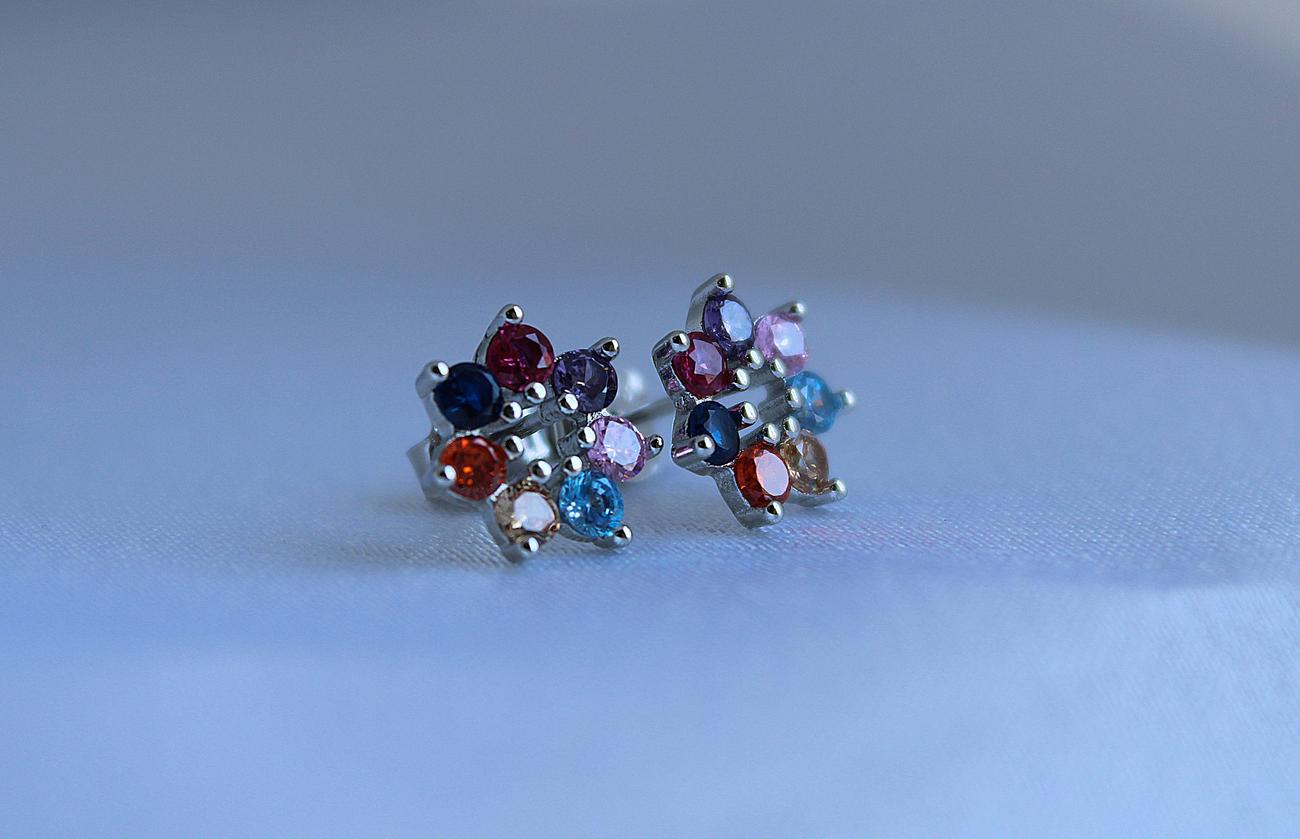Welcome to “Eternal Blue: Unveiling the Origins and Symbolism of Sapphires,” where we embark on an enchanting journey into the captivating world of one of nature’s most stunning treasures. In this article, we delve deep into the rich history and cultural significance behind sapphires, unravelling the mysteries of their origins and exploring the profound symbolism they hold. Prepare to be dazzled as we unveil the secrets of these alluring gemstones, shedding light on their timeless beauty and the profound stories they whisper from ancient civilizations to modern times.

Sapphire Origins and Symbolism
Sapphires, with their mesmerizing blue hues, have a rich history and profound symbolism that transcends cultures and time. The origins and symbolism of sapphires truly make them a captivating gemstone. Let’s dive into the fascinating world of sapphires and explore their remarkable journey through history and their profound meaning in our lives.
Sapphires, believed to have originated in ancient Persia, have captured the hearts of humans for centuries. Drenched in enchanting shades of blue, sapphires have been revered as symbols of nobility, truth, sincerity, and faithfulness. They have adorned the robes of royalty and clergy members, representing a regal and divine connection. But their significance goes beyond superficial beauty.
Embedded in the depths of sapphires lies a profound symbolism. Associated with wisdom, serenity, and faith, sapphires evoke a sense of tranquility and enlightenment. They are believed to bring clarity to the mind and clarity to the soul. With their deep blue hues, sapphires symbolize the vastness of the sea and the boundless sky, reminding us of the infinite possibilities and the enduring presence of something greater than ourselves.
Not only do sapphires hold deep spiritual and emotional meaning, but they are also considered stones of prosperity. Throughout history, sapphires have been cherished for their allure and value. Their radiant beauty has captured the attention of civilizations across the globe, from ancient Persia to Egypt, Greece, and Rome. Their role as tokens of wealth and prosperity has persisted through the ages, making sapphires a sought-after gemstone for those seeking abundance and good fortune.
What makes sapphires even more intriguing is their geological composition. Sapphire belongs to the corundum mineral family, alongside its fiery counterpart, ruby. Although both gemstones are composed of the same mineral, the distinction between them lies in their color. Gem-quality red corundum is classified as ruby, while gem-quality corundum of any other hue is considered sapphire.
Corundum, an allochromatic gemstone, derives its color from trace elements present during its formation. These elements infuse sapphires with a spectrum of captivating colors, ranging from heavenly blues to vibrant pinks, mesmerizing yellows, and even rare and precious padparadscha sapphires with their delicate blend of pink and orange. The kaleidoscope of colors found in sapphires reflects the complexity and diversity of human emotions, making them even more relatable and enchanting.
Throughout history, sapphires have been treasured for their beauty and spiritual value. Their significance extends beyond personal adornment, as they have been associated with well-being and social harmony. Ancient civilizations believed that sapphires brought divine favor and wisdom, acting as conduits for heavenly blessings. The ancient Greeks, for instance, associated sapphires with the god Apollo, seeking their divine guidance and enlightenment.
In the Middle Ages, sapphires found renewed popularity and were associated with heaven and celestial symbolism. They were believed to possess magical properties and were often worn by clergymen to symbolize their connection to the divine. Even today, sapphires continue to inspire awe and are a popular choice for engagements, symbolizing eternal love and commitment.
In conclusion, sapphires are much more than just dazzling gemstones. Their origins and symbolism weave a fascinating narrative of wisdom, prosperity, spirituality, and eternal love. With their origins rooted in ancient Persia and their symbolism etched in the annals of history, sapphires enchant us with their vibrant colors and profound meanings. They are a testament to the enduring allure of gemstones and the lasting impact they have on our lives.
“Sapphires, with their enchanting blue hues, symbolize nobility, truth, sincerity, and faithfulness.”
Sapphire is a gemstone that has captivated people for centuries with its deep blue hues and mesmerizing sparkle. But do you know the fascinating history behind this precious gem? If you’re curious to learn about the origins and significance of sapphires, click here for an intriguing journey through the centuries. Discover how sapphires have been revered by ancient civilizations and adorned the crowns of royalty. Uncover the tales of famous sapphires that have graced the world’s most exclusive jewelry collections. Delve into the rich lore and symbolism that surrounds this gemstone, and gain a newfound appreciation for its timeless beauty. Don’t miss out on exploring the captivating world of sapphire history. Click here to embark on this breathtaking journey through time: Sapphire History

FAQ
Q: What are the symbolic meanings associated with sapphires?
A: Sapphires are symbols of nobility, truth, sincerity, and faithfulness. They are also associated with wisdom, serenity, and faith. Additionally, sapphires are believed to bring divine favor, prosperity, and well-being.
Q: How is the color of sapphires determined?
A: Sapphires belong to the corundum mineral family, and their color is determined by trace elements present in the gemstone. While gem-quality red corundum is classified as ruby, gem-quality corundum of any other hue, including blue, pink, yellow, and green, is considered sapphire.
Q: What is the significance of sapphires in religion and history?
A: Sapphires have a long history of being used for their beauty and spiritual value. They have been employed to decorate the robes of royalty and clergy members. Ancient Greeks associated sapphires with the god Apollo, believing these gemstones would bring divine favor and wisdom. Since the Middle Ages, sapphires have been associated with heaven and celestial symbolism.
Q: How durable are sapphires?
A: Sapphires are highly durable and hard gemstones. They rank 9 on the Mohs scale of mineral hardness, second only to diamonds. This hardness, along with their excellent toughness, makes sapphires well-suited for everyday wear in various jewelry pieces.
Q: Are sapphires associated with any particular month?
A: Yes, sapphires are the birthstone for September. They are often chosen as meaningful and personalized gifts for individuals born in this month.
“`json
“`
- Crypto Quotes’ Red Flags: Avoid Costly Mistakes - June 30, 2025
- Unlock Inspirational Crypto Quotes: Future Predictions - June 30, 2025
- Famous Bitcoin Quotes: A Deep Dive into Crypto’s History - June 30, 2025
















